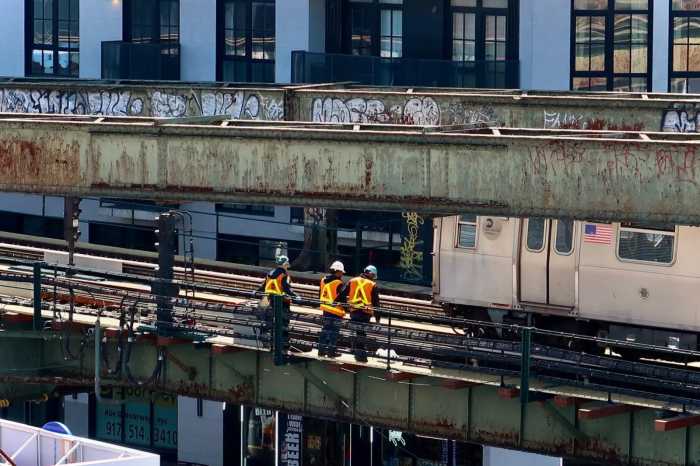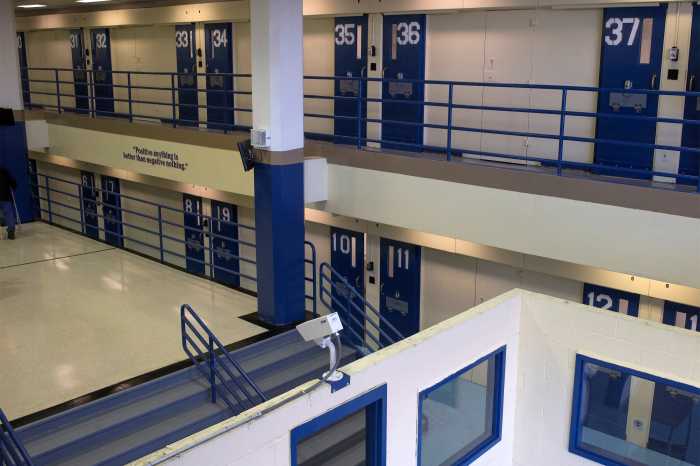The CEO of a lumber company that provides wood for many of the city’s
new housing, corporate and institutional buildings said this week that
the disappearance of the Brooklyn container port would leave his company
with no place to efficiently deliver its product for consumption in the
five boroughs.
Sherwood Lumber Corp., which delivers 50 to 60 truckloads a day to area
lumber suppliers and hardware centers, is one of the largest customers
still using the cargo and container port on the Red Hook and Columbia
Street Waterfront District piers, which receives and stores at least 300,000
pounds of lumber at a time.
American Stevedoring Inc. (ASI), the Brooklyn port operator, currently
stores the lumber on the piers for distribution, but the city plans on
using one of those piers, Pier 10, for an expansion of its planned cruise
ship docking operations after ASI’s lease expires in 2007 and such
officials as Deputy Mayor for Economic Development Daniel Doctoroff have
expressed a preference for cruise-related businesses on the remaining
piers.
Meanwhile, ASI officials say the port would not be able to continue without
its largest pier and are considering a move to either New Jersey or Baltimore.
The company already has a satellite port in Newark and is partnering with
a Geneva, Switzerland-based shipping company on a deal that could find
a home in either New Jersey or Baltimore.
“We inked a deal with Mediterranean Shipping, we’re just not
sure where it will be yet,” said ASI spokesman Matt Yates, who said
the two would team up on a $200 million shipping terminal.
“We are at a point where cargo is struggling to get into the city,”
said Yates. “Whether through Baltimore, Philadelphia or directly
by water to New York City, these transportation needs must and will be
met. Doing it economically, efficiently and with regard to the environment
however, is all of our challenge.”
Sherwood Lumber officials fear the loss of the Brooklyn port will hurt
their business in New York City, or at least raise the cost of doing business
here.
“The Red Hook terminal is very instrumental in the warehousing and
servicing the lumber dealers that supply to the major construction jobs
in and around the five boroughs,” said Andy Goodman, the president
and CEO of Sherwood Lumber Corp., which is based in Islandia, N.Y.
At the terminal, American Warehousing, a subsidiary of ASI, oversees the
weekly unloading of shipments for Sherwood. Drivers are assigned to deliveries
at various lumberyards citywide, including Metropolitan Lumber in Manhattan
and Brooklyn, Feldman Lumber in Brooklyn and Queens, Ozone Park Lumberyard,
Myron Lumber, Mensch Lumber, Heavy Lumbers and the Strober Organization.
“What is the most convenient part of this equation for the people
that we supply, is that we’re able to store mass amounts of the products
that have to be received by ship form various parts of the world, and
we can then arrange for the deliveries just in time for their needs,”
Goodman said, instead of unloading much more lumber than is necessary
at a site that may not have the room to store it.
“In the Brooklyn area, land and storage space is precious and small,”
he added. “So how can somebody contain the amount of lumber they
need when they’re squeezed for space?”
He compared the difficulty of storage in the city to the ease with which
projects in upstate Sullivan County or Monticello can stockpile lumber.
“They’ve got maybe 50 acres,” Goodman said.
Having the wood sent by ship saves Sherwood substantial sums of money,
said Goodman, and in some cases is the only option.
Sherwood’s supply, which includes Douglas fir from as near as Canada
and pine from as far as Brazil, relies on a mix of shipping ports, mainly
because that is the most cost-efficient solution.
“The manufacturers that I buy it from have a freight-advantage of
cost savings,” he said. “To ship one from Brazil, of course,
you don’t have a choice, but from the West Coast you could ship it
by rail, but you have the cost of at least 10 percent more than shipping
it by boat,” Goodman said.
Even within the city, the lumber company’s users are far-flung.
Bob Feldman, who owns Feldman Lumber, in Greenpoint, says their mammoth
lumberyard supplies many of the city’s major reconstruction efforts,
including the Ground Zero reconstruction.
“We’ve been in Brooklyn, for close to 90 years,” said Feldman.
“We supply every major project in New York — the World Trade
Center, as well as the residential properties, the rehabilitations and
the brownstones.”
Sherwood, he said, was one of the major suppliers, though he declined
to offer numbers.
“We give Sherwood a substantial amount of lumber business,”
Feldman said.
Chris Ward, the president and CEO of ASI, said Sherwood shipments make
up a large percentage of the port’s business.
“It’s really big. They’re a big, big client right now,
bringing in more and more lumber every single time, to such an extent
that we are becoming a major lumber port for not only the East Coast,
but now out on Long Island and an ever-growing market,” Ward said.
Goodman, who pointed out that much of the planned residential development
in Brooklyn relies on his company’s efficiency in supplying them
with materials, urged for the retention of at least one working port in
Brooklyn.























